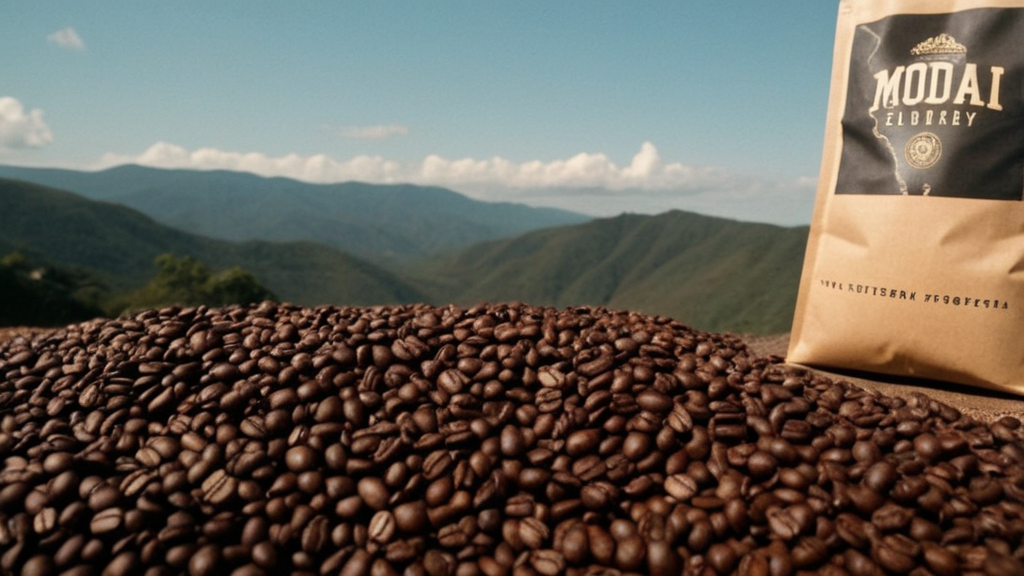Your cart is currently empty!
Maintaining Freshness of Colombian Coffee During Shipping and Storage

Colombian coffee is known for its strong taste and high quality but keeping it fresh during shipment and storage can be hard. Whether you enjoy coffee, work as a barista or run a coffee shop, you must know the everyday problems that reduce the coffee’s freshness. This guide explains those problems and shows simple ways to lessen them.
How Colombian Coffee Travels?
Colombian coffee goes through many steps before reaching your cup. The work starts with picking the ripe cherries, then the beans get cleaned and dried. When the beans are ready, they move to places where they are sorted and roasted before being packed and sent to different parts of the world. Each step can lower the coffee’s freshness, so it is important to know the usual problems during shipment and storage.
The Need for Good Packing
Good packing is the first step to stop the coffee from losing freshness during shipment and storage. Colombian coffee is put in burlap sacks or sealed bags. Burlap sacks which have been used for a long time, give little help against moisture and air. Air causes the coffee to lose taste and smell, while moisture helps mold to grow making the coffee unfit to drink.
New packing ideas such as vacuum-sealed bags or bags with one-way valves, keep the coffee away from air and moisture. These methods are starting to replace the old ways so that the coffee keeps its freshness during the trip.
Keeping the Right Temperature and Humidity
Temperature and humidity matter a lot for Colombian coffee when it is stored. Coffee beans react badly to big changes in temperature and high moisture. Extreme heat or cold can take away the bean’s oils and flavors leaving a dull taste. High moisture can cause water droplets inside the package and help mold to grow.
To keep coffee in good shape, store it in a cool, dry spot with the same temperature and moisture. This is difficult during shipment, when conditions change a lot. Using insulated boxes and rooms that control the climate helps keep the coffee fresh upon arrival.
Transportation Problems
Moving Colombian coffee over long periods brings its own troubles. Trucks next to planes give different conditions to the coffee. Shipping by boat may last weeks during which the coffee faces changing temperature, moisture along with even saltwater.
Air shipping is faster but costs more and does not remove the risk of changing temperature or moisture. Careful handling and special boxes can help the coffee keep its freshness during travel.
How Roasting and Waiting Affect Freshness
Roasting and waiting affect how fresh Colombian coffee stays. Right after roasting beans give off gases that must leave slowly so that the beans do not lose their taste. Wrong handling during shipment or storage stops this gas from leaving properly and the coffee loses its taste quickly.
Allowing the coffee to settle before shipping can help keep its taste and smell. The wait must be controlled so the coffee does not lose freshness. Clear work between roasters, exporters along with buyers is needed to make sure the coffee waits the right time and is shipped when best.
Storing Coffee to Keep Freshness
When Colombian coffee arrives, it must be stored to remain fresh. Coffee shops or sellers should use containers that do not let air in and keep the coffee away from sunlight, heat or strong smells. Light and heat speed up the aging process, while strong smells get into the coffee and change its taste.
Checking storage conditions often and using older coffee first helps keep freshness. Using a system where the first coffee received is the first one used stops the coffee from sitting too long, so customers get fresh coffee every time.
Common Mistakes and How to Avoid Them
Many errors can spoil the Colombian coffee during shipping, storage. Some errors include:
- Using Poor Packaging: Burlap sacks, non-sealed bags let oxygen, moisture reach the coffee.
- Ignoring Temperature, Humidity Control: Wrong storage leads to oxidation, mold on the coffee.
- Faulty Handling During Transit: Rough treatment, exposure to harsh conditions harm the beans.
- Wrong Roasting, Aging: Excess or insufficient roasting changes the coffee flavor.
- Bad Storage: Keeping coffee in a poor environment lowers its taste.
To prevent these errors, coffee lovers, baristas, shop owners should choose better packaging, check storage conditions closely, treat the coffee with care during shipping, follow solid methods for roasting, aging. Regular training for staff on how to handle, store the coffee also helps keep it fresh.
Best Practices for Maintaining Freshness
Keeping Colombian coffee fresh needs a mix of methods. Key steps are:
- Choose Better Packaging: Use vacuum-sealed bags or bags with a one-way valve to reduce oxygen, moisture contact.
- Control Temperature, Humidity: Keep coffee in a cool, dry place with steady temperature, humidity.
- Treat Coffee Carefully During Transit: Use insulated containers, climate-controlled storage areas.
- Age Correctly: Follow clear steps for roasting aging to keep flavor, aroma steady.
- Check Details Regularly: Use a FIFO (First-In First-Out) system; check storage conditions often.
Following these steps lets coffee lovers, baristas, shop owners keep Colombian coffee with strong flavor, aroma giving customers a steady good taste.
Conclusion
Keeping Colombian coffee fresh during shipping, storage is a difficult task that covers packaging, temperature checks, transport, roasting, aging, proper storage. Knowing common issues that can lower quality and using good methods helps solve these problems and keeps the coffee quality high from the farm to the cup.
Whether you are a coffee lover, barista or shop owner, use good packaging, check storage conditions, handle the coffee with care and follow correct roasting aging steps. These actions improve the coffee freshness, taste, so customers get good quality every time growing loyalty, satisfaction.